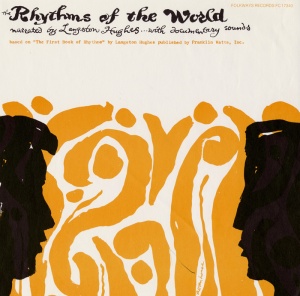Langston Hughes
Listen to the Recess! Clip
| Author | John Cech |
| Air Date | 2/2/2000 |

Langston Hughes Transcript
What better place to begin Black History Month than with Langston Hughes, who reminds us of the poetry–singing, ringing, soaring, impassioned poetry that is such an essential part of the African American experience.
A lesser known aspect of Hughes’s creative life is the work he did for children. An especially interesting example of this is a 1955 Folkways album called “The Rhythms of the World,” in which Hughes introduced children to the idea of rhythm, and the vital role it plays in our lives.
He begins with the most basic of rhythms, the human heartbeat and connects it with one of the earliest forms of music:
Brief Sound Clip:
And soon he is carrying his associations through a more and more complex forms of rhythmicizing, from hand clapping and tap dancing to pre-Stomp teenagers improvising on park benches and pop bottles to the polyrhytms of a jug band:
Brief Sound Clip:
Hughes keeps spreading his field of sound references wider and wider to include the rhythms poetry and ocean waves, the pulsating calls of fish and the sound patterns of rain, machinery, and short wave radio signals, the rhythms of a person’s walk and of a kitten’s meow–until, at the end, the cosmic and the everyday are fused, in a perfect final chord of words and sounds:
Brief Sound Clip: